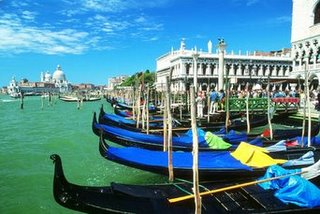

Sitting as it does on top of the water, Venice has always been vulnerable to flooding. In the 20th century, though, flooding began to look like a permanent possibility when the city started to sink. Now, entering the 21st century, Venice is no longer sinking--instead, the sea around it is rising.
Across the Venice Lagoon from the ancient city are the modern industrial cities of Mestre and Marghera. In the years following World War I, these cities began pumping water out of the ground underneath Venice to supply their growing populations. As the ground water was drained, the soil began to settle under the weight of the city above it.
Before the Italian government came to the rescue in 1973, Venice had sunk by as much as a foot. Two aqueducts were built to supply Venice's neighbors with water from the country's interior, and the sinking stopped.Unfortunately, whether due to the greenhouse effect or global climatic trends, water levels around the world are rising.
At the current rate, scientists say the Adriatic Sea around Venice could rise three feet over the next 100 years--which would be catastrophic for Venice.There's little Venice can do to prevent the sea from rising. However, to keep the city's buildings and streets dry during high autumn and winter tides, scientists have proposed Project Moses, which would install underwater barriers between the islands separating the lagoon from the Adriatic. These barriers could rise to block incoming waves. Environmentalists, however, fear that the barriers would disrupt the lagoon's ecology.
Charles Dickens once described the Venice Lagoon as an old serpent, "noiseless and watchful: coiled round and round." Only time will tell if the old serpent will ultimately swallow Venice whole.
"A journey of a thousand miles must begin with a single step." -- Lao Tzu
Copyright © Demetrios the Traveler

No comments:
Post a Comment